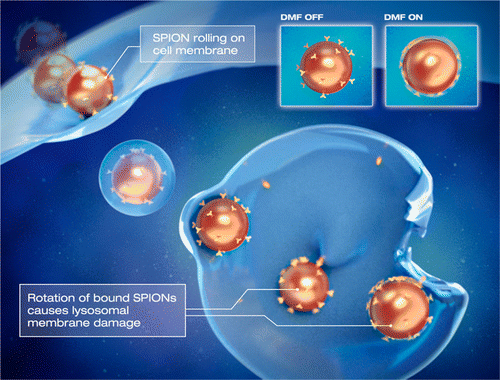The necessity of finding a safer and more efficient way to treat cancer has led investigators to naturally turn their attention toward nanoparticles. Recently, a group of researchers in Sweden has come up with a novel system of utilizing magnetic particles to trigger apoptosis, thus resulting in the self-destruction of tumor cells. The findings, published in the journal ACS Nano, signify a promising approach to cancer treatment, with implications extending beyond oncology and encompassing a range of clinical applications.
Targeting tumor cells
Standard oncology treatments involve aggressively going after cancer cells with either cytotoxic drugs or with radiation. The problem with the methodology currently in place is that the techniques are not specifically targeted to the cancer cells. Thus, chemotherapy affects healthy cells as well as cancer cells, while radiation and hyperthermia cause damage and/or inflammation to the tissue localized near the tumor.
In an effort to limit these side effects, a group of scientists at Lund Univeristy has developed a way to target tumor cells using superparamagnetic iron oxide nanoparticles.
Inciting tumor cells to self-destruct
The nanoparticles contain a surface marker that directs them to attach to the cell’s lysosomes. Once the particles are attached to the lysosomal wall, investigators generate a magnetic field, inducing the particles to spin. The shear forces generated cause the lysosomal membrane to come apart, thus triggering the tumor cell to self-destruct.
The findings reveal that the treatment is effective as well as specific, minimizing damage to surrounding tissue. Researches emphasize that the significance of their techniques lies in the fact that the effect is not only contained, but can also be controlled remotely.
While the work was carried out in tumor cells, possible applications extend beyond cancer treatment. According Erik Renstrom, one of the study’s lead investigators, the newly developed method could potentially be effective in treating autoimmune diseases such as type 1 diabetes.
You can read the whole study through this link.
The Lund University team has applied for a patent for their technique. Much work remains before the process enters the clinical trials stage and can be attempted on cancer patients. Researchers remain hopeful, however, that the technique can one day be utilized to successfully and non-invasively eradicate tumor cells, leaving healthy tissue intact.




